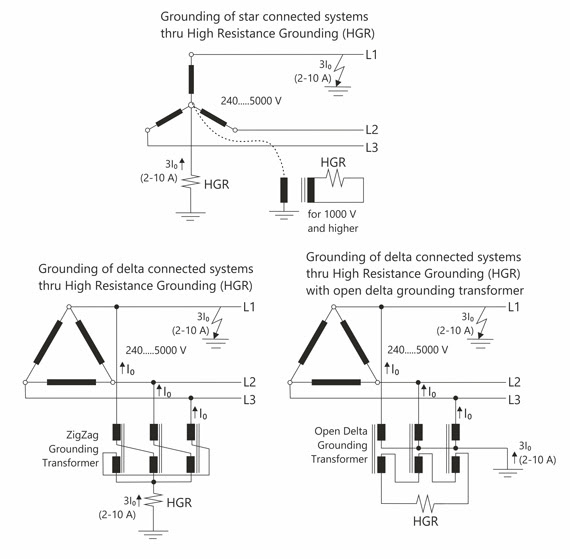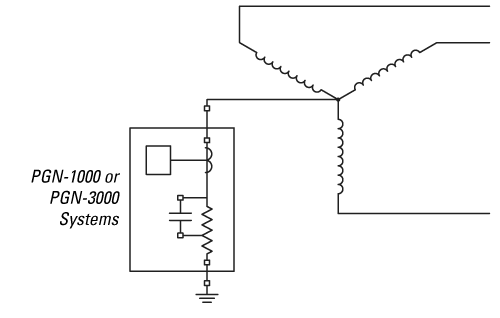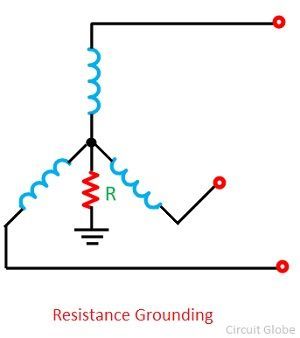Resistance Grounded
If you're an electrician or anyone who works with electricity, then you know how important it is to keep yourself and others safe. One way to do that is by using resistance grounded systems. Shock and electrocution can be fatal, and it's important to understand how to prevent them.
The Pain Points of Not Using Resistance Grounded System
Without resistance grounded systems, electrical equipment can become charged with high-voltage electricity. This can be dangerous because if someone were to come into contact with the equipment, they could get electrocuted. Additionally, ungrounded systems can cause damage to equipment and lead to costly repairs.
What is Resistance Grounded?
Resistance grounding is a way to limit the amount of fault current that can flow through an electrical system. In a resistance grounded system, a resistor is placed between the system's neutral point and ground. By doing so, the current is limited to a safe level when a fault occurs.
Summary of Resistance Grounded and Related Keywords
In summary, resistance grounded systems are a way to protect people and equipment from dangerous levels of electricity. By limiting fault current, resistance grounded systems prevent electrocution and damage to equipment. Implementing a resistance grounded system is an essential safety measure that should be taken in any electrical system.
The Target of Resistance Grounded
The target of resistance grounded is to prevent electricity from reaching unsafe levels. By using a resistor in the system, the current is limited to a safe level in the event of a fault. This protects people from electrocution and equipment from damage.
Personally, I was working on a job site where the system was not resistance grounded. One day, there was a fault in the system that caused high levels of voltage to flow through the equipment. Thankfully, no one was injured, but the equipment was damaged. After that experience, I saw first-hand the importance of using resistance grounded systems.
The Benefits of Using Resistance Grounded Systems
One of the main benefits of using resistance grounded systems is safety. By limiting the amount of fault current, these systems prevent injury and equipment damage. Additionally, the use of resistance grounded systems can lower insurance costs and increase system uptime by reducing damage to equipment.
How Resistance Grounding Works
The resistor in a resistance grounded system is designed to have a high resistance value. This limits the amount of current that can flow through the system during a fault, and the resistor becomes hot as a result. The hot resistor serves as a visual indication of a fault and allows for easy localization of the problem.
The Importance of Maintaining Resistance Grounded Systems
Proper maintenance is important for any electrical system, and resistance grounded systems are no exception. Regular inspections and testing can help ensure that the resistor is working properly and that the system is grounded correctly. Additionally, any damaged or malfunctioning equipment should be repaired or replaced as needed to maintain safe and effective operation.
Question and Answer Section
Q: What are some common applications for resistance grounded systems?A: Resistance grounded systems can be used in a variety of applications, including mining, healthcare facilities, and data centers. Q: How can I tell if my system is resistance grounded?
A: A resistance grounded system will have a resistor located between the neutral point and ground. There may also be visual indicators, such as lights, to show the system status. Q: What is the difference between resistance grounding and solid grounding?
A: Solid grounding involves connecting the neutral point directly to ground, while resistance grounding uses a resistor to limit the current in the event of a fault. Q: Can I retrofit a system to be resistance grounded?
A: Yes, it is possible to retrofit a system to be resistance grounded. However, it is important to consult with a qualified electrician to ensure that the retrofit is done properly and safely.
Conclusion
Resistance grounded systems are an essential safety measure for anyone working with electricity. They help protect people and equipment from dangerous levels of electricity and can prevent costly damage and downtime. Proper installation, maintenance, and testing of resistance grounded systems are important for ensuring safe and effective operation.
Gallery
High Resistance Grounding System Diagram - Diagram For You

Photo Credit by: bing.com / grounding
Resistance Grounded - Electrician Talk - Professional Electrical

Photo Credit by: bing.com / resistance grounded micromind
Resistance Grounding Conversion - Littelfuse

Photo Credit by: bing.com / resistance grounding conversion system voltage figure littelfuse fault relays
What Is Resistance & Reactance Grounding? Definiton & Explanation

Photo Credit by: bing.com / resistance grounding reactance grounded system high
Ground Earth Resistance – CANADA GLOBAL
Photo Credit by: bing.com / resistance ground qa groung
0 Response to "Resistance Grounded"
Post a Comment